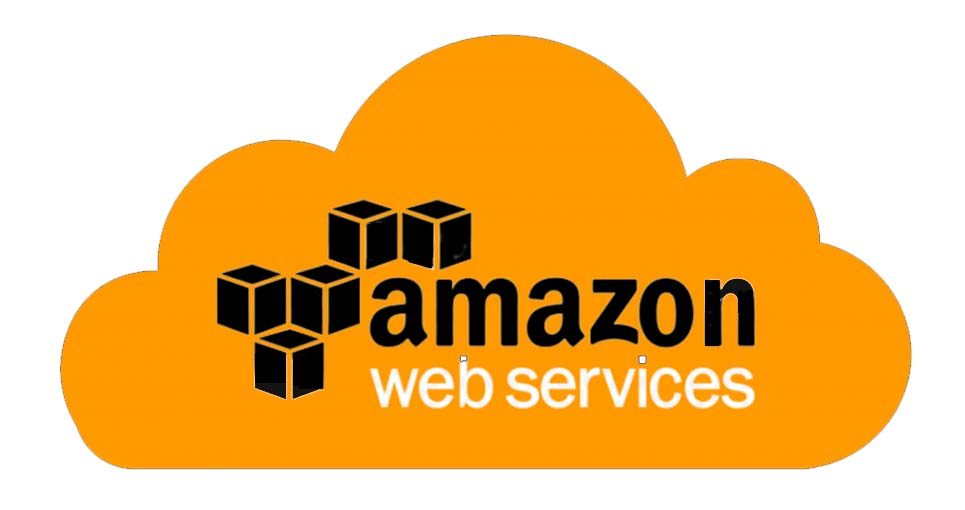- Call us: +1 (469) 756-6329 | +91 7004 215 841
- Email: info@devopsconsulting.in
Amazon AWS Training
ABOUT
Amazon Web Services is a secure cloud services platform, offering compute power, database storage, content delivery and other functionality to help businesses scale. AWS certification training helps you scale your cloud skills and gain expertise in AWS platform. AWS Technical Essentials, AWS Developer, AWS Solution Architect, AWS Sys Ops are the major courses offered.
In this course we will start with a broad overview of the AWS platform and then deep dive into the individual elements of the AWS platform. You will explore Route53, EC2, S3, Cloud Front, Autoscaling, Load Balancing, RDS, RedShift, DynamoDB, EMR, VPC etc.

OBJECTIVES
Related job functions:
- Deploying, managing, and operating scalable, highly available, and fault tolerant systems on AWS
- Migrating an existing on-premises application to AWS
- Implementing and controlling the flow of data to and from AWS
- Selecting the appropriate AWS service based on compute, data, or security requirements
- Identifying appropriate use of AWS operational best practices
- Estimating AWS usage costs and identifying operational cost control mechanisms
PRE-REQUISITES
Before attending this course, participants should have:
- Basic proficiency with command-line tools and linux operating system environments
- Prior systems operations experience, either on-premises or using a public cloud
- Should be graduates in Computer science
FEATURES
- ✔ 30 Hours instructor led online class
- ✔ Hands on Approach - We emphasize on learning by doing.
- ✔ Life time free re-enrollment to future DevOps courses
- ✔ Life time free access to all learning materials including
- ✔ Class recordings
- ✔ Presentations
- ✔ Sample Code
- ✔ Projects
- ✔ Total Lab Infrasture in cloud and 24x7 available
- ✔ 70% of the class is consist of Lab
- ✔ Each week assignments(total 4) with personal assistance
- ✔ Two real time senario based projects with standard evaluation
- ✔ 24x7 online support to queries during and after the course completion
- ✔ 1 dedicated class for Interview preparations
AGENDA
Amazon AWS Advance and Operations
Number of Day - 3
This also course covers topics to help you operate a Dockerized application
environment. From understanding Docker Orchestration with Machine, Swarm and
Compose, to security best practices and troubleshooting Docker containers.
Private
repository and registry concepts are also explained in this course. This two day
course is designed to help new and experienced systems administrators learn to
use
Docker to control the Docker daemon, security, Docker Machine, Swarm, and
Compose.
The basic course program is outlined here:
- ✔ Welcome: Course Overview
- ✔ VPC: Building Your Network Foundation
- ✔ VPC: The Nitty Gritty Configuration
- ✔ VPC: Security Groups and NACLs
- ✔ VPC: Configuring VPN Connections
- ✔ VPC: Designing for High Availability
- ✔ EC2: Instance Types and Performance Implications
- ✔ EBS: Understanding EBS
- ✔ EBS: Snapshot Backup and Replication
- ✔ EBS: Getting More Speed and IOPS
- ✔ S3: Understanding the Properties of S3
- ✔ S3: Securing S3 Buckets
- ✔ S3: Website Hosting from S3
- ✔ ELB: Elastic Load Balancer Concepts
- ✔ ELB: Elastic Load Balancer Implementation
- ✔ AutoScaling: Key AWS AutoScaling Concepts
- ✔ DNS: Understanding Route 53 Capabilities
- ✔ DNS: Route 53 Configuration
- ✔ IAM: Understanding IAM Concepts
- ✔ IAM: A Walkthrough IAM
- ✔ Monitoring: Understanding and Configuring CloudWatch
- ✔ Backups: Understanding EBS, S3, and RDS Backup Options
- ✔ RDS: Understanding RDS Foundations
- ✔ RDS: High Availability and Load Sharing
- ✔ SECURE: Handling IT Audits, Security Token Service, and Trusted Advisor
- ✔ EXAM: Study Strategies and Exam Mindset
1. Welcome: Course Overview
Welcome to the AWS SysOps Administrator series! In this Nugget, Jeremy walks you through an overview of the series, prerequisite material requirements, and explains how to get the most out of the time you spend here. So, what is your billion dollar idea?
3. VPC: The Nitty Gritty Configuration
Yes. This is a Nacho Libre reference. Please forgive us. This Nugget goes "beyond the wizard" and into the individual VPC components. By the time you're through, you'll have a much better understanding of each of the VPC elements (route table, IGW, ENI, EIP, etc.). You'll also gain an appreciation for the "art" involved in adding a second NIC (ENI) to an Ubuntu instance!
4. VPC: Security Groups and NACLs
In terms of security, the internet can be a nasty place. In this Nugget, Jeremy walks through the concepts and configuration of two layers of security you can add to your VPC-based AWS deployment: Security Groups and Network Access Control Lists (NACLs).
5. VPC: Configuring VPN Connections
Within AWS VPC, Amazon gives you the ability to configure Hardware-based and Direct Connect VPNs. In this Nugget, Jeremy explores your VPN options and walks through the configuration of a site-to-site hardware VPN.
6. VPC: Designing for High Availability
This Nugget is your CRAM SESSION on all things High Availability (HA). In here, Jeremy walks through redundant designs for Direct Connect, NAT Instances, Elastic Load Balancer (ELB), Web / Database Applications, Session State, and Route 53. Whew!
7. EC2: Instance Types and Performance Implications
It sounds like a drive through restaurant - "I'll take 5 of the m3 extra large...uhhh...and give me one of the t2 micros with ketchup on the side." What does all this mean? That's what this Nugget is all about! Join us as we explore the AWS Pricing Models (On-Demand, Reserved, Spot) and instance types.
8. EBS: Understanding EBS
This Nugget conveys the essence of EBS (comparing it to S3 and Ephemeral storage) and discusses EBS usage, limits, durability, and backups.
9. EBS: Snapshot Backup and Replication
Understanding the interaction between EBS and S3 is essential to your success with AWS. In this Nugget, you will understand how EBS and S3 work together, how to create EBS Snapshots (how to do it, the best time to do it, etc...), and the S3 to EBS "Lazy Load" process.
10. EBS: Getting More Speed and IOPS
EBS has the potential to "make or break" the performance of your instances running in AWS. In this Nugget, Jeremy discusses ways you are able to increase the performance (throughput and IOPS) of your EBS volumes, which range from completely "free" strategies (is anything free?) to paid EBS-Optimized / Provisioned IOPS instances.
11. S3: Understanding the Properties of S3
Amazon S3 provides unlimited, ultra-durable cloud storage; however, what is behind this "storage bucket in the sky?" Is it trustworthy? Can you secure it? Can you map a drive and install a program to it? All these answers (and plenty more) in this Nugget.
12. S3: Securing S3 Buckets
A man, bucket policies, and the edge of humanity (you'll understand once you watch). In this Nugget, Jeremy focuses on the three methods you can use to secure S3 Buckets: Identity and Access Management (IAM), Bucket Policies, and Access Control Lists (ACLs).
13. S3: Website Hosting from S3
AWS S3 services provide not only insanely durable storage (99.99999999999% durability), but also the ability to host static website content (image libraries, downloads, streaming files, etc...) directly out of the S3 bucket! In this Nugget, Jeremy demonstrates the process of making this happen and even brings a REALLY cute bunny on-board.
14. ELB: Elastic Load Balancer Concepts
It is virtually impossible to tap the full potential of AWS without a thorough understanding of the Elastic Load Balancer (ELB). In this Nugget, Jeremy unpacks the key concepts behind this mystical device.
15. ELB: Elastic Load Balancer Implementation
This Nugget is dedicated to ELB implementation. Jeremy walks through each step of the process in creating an ELB and stops to explain some typically confusing concepts (cross-zone load balancing and connection draining).
16. AutoScaling: Key AWS AutoScaling Concepts
It's time for another one of those paradigm-shifting cloud concepts: AutoScaling. In this Nugget, Jeremy shares the key principles and elements that makes the cloud an "elastic" design.
17. DNS: Understanding Route 53 Capabilities
DNS...translates domain names to IP addresses...seems simple, right? Very few realize the instrumental and fundamental role DNS plays in your system performance and keeping your web-based services running at all! In this Nugget, Jeremy breaks down the "AWS way" of handling DNS: Route 53! You will see what Route 53 offers that others do not along with a foundation understanding of DNS methods and core records.
18. DNS: Route 53 Configuration
Brace yourself for a "meaty" Nugget full of Route 53 configuration goodness. In here, you will learn the process of AWS domain registration, record creation, redundancy (including weighted, latency, failover, and geoDNS), and health checks.
19. IAM: Understanding IAM Concepts
Using the Master account you created when you signed up for AWS is similar to using the root account for all your Linux administration: you shouldn't do it. In this Nugget, Jeremy walks through the IAM "Big Picture," discusses the IAM elements (users, groups, roles, policies, and permissions), and even explores Java Script Object Notation (JSON) basics.
20. IAM: A Walkthrough IAM
Sometimes just seeing the puzzle pieces fit together helps quickly solidify all the concepts! In this Nugget, Jeremy walks through the configuration of users, groups, roles, and policies (we especially liked the part where he enabled MFA on the user account!).
21. Monitoring: Understanding and Configuring CloudWatch
The title says it all! In this Nugget, Jeremy discusses what you are able to monitor in the AWS system using CloudWatch and walks through the configuration of metric monitoring and alarms (in addition to finding a surprising billing alarm that we will be discussing with Jeremy directly).
22. Backups: Understanding EBS, S3, and RDS Backup Options
After a traumatic introduction, Jeremy unpacks snapshot backups and other backup strategies for EBS, S3, and RDS databases.
23. RDS: Understanding RDS Foundations
It's time to dive into the database world! Nearly all of the web-based applications rely on some sort of database back end. It would make sense that that back end is ultra reliable, right? In this Nugget, Jeremy walks through the core concepts of Amazon Relational Database Service (RDS) and shows just how easy it is to set up a redundant, backed up database in multiple data centers.
24. RDS: High Availability and Load Sharing
Nearly everyone selects the "MultiAZ" option for their RDS database when they initially bring up the instance, but what does that mean? In this Nugget, Jeremy unpacks the specifics of this feature as well as the load sharing capabilities of Read Replicas.
25. SECURE: Handling IT Audits, Security Token Service, and Trusted Advisor
This self-proclaimed "Miscellaneous Security Grab-Bag" of topics is a wild ride through the process of handling a shared-security IT audit, providing temporary authentication credentials with the Security Token Service (STS), and saving money and security failures with Trusted Advisor.
26. EXAM: Study Strategies and Exam Mindset
Are you considering taking the AWS SysOps Admin certification exam? Then this Nugget is for you! In here, Jeremy goes through the exam mindset and study tips that gear you for success!
27. EXAM: The Living Glossary
It's a brand new idea: The AWS Living Glossary! Because there are so many new terms in the AWS world, Jeremy felt it would be a good idea to get a fly-by review of the key terms in AWS before venturing into the exam.



|
|---|
